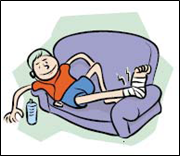If you sustain an injury, whether it is at work, sport or around the home, you need to manage it well. Nobody likes to be out of action or sitting on the side lines due to injury. If you immediately start to manage your injury with the most evidence based (and common sense) practices you will be able to heal and get back to fitness quicker.
The best way to manage an acute injury has not changed a lot over the past 15 years. The principles of RICER and No HARM help prevent further damage and reduce time of healing. The correct use of RICER and No HARM factors is essential for the initial management of a soft tissue injury and should be continued for 48-72 hours.
Rest
Get yourself into a comfortable REST position. Rest the injured area for 48-72 hours after your injury. Also try to avoid excessive movement of the injured area as this will increase swelling & bleeding and may cause further damage to the area.
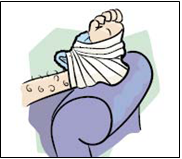 Ice
Ice
Apply ice to the area for 15-20 minutes every 2nd hour for the first 48-72 hours after injury. Ice may reduce swelling and bleeding and is also a great pain reliever. You could apply:
* Ready-made cold pack from the freezer, wrapped in a wet towel
* Crushed ice in a wet towel or plastic bag
* Or a bag of frozen peas in a wet towel
* AVOID applying ice directly onto the skin
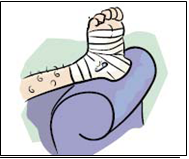 Compression
Compression
Applying a bandage will reduce extra bleeding and swelling and will provide more support for the injured joint/area. Ensure the bandage is not too tight – causing numbness, tingling or blue tinge to skin or extremities are signs it is too tight.
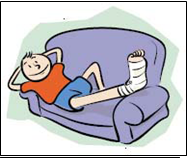 Elevation
Elevation
Raise the injured area above the level of the heart at all times or as much as possible (at least 10mins every hour). A pillow can be used to provide support and comfort. Elevating the injured area initially prevents excessive swelling to the area as well as pain. If you avoid excessive swelling and bleeding in the area initially the healing process is not hindered by such restriction of movement or blood flow in later stages of the healing phase.
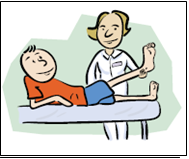 Refer
Refer
As soon as possible after injury arrange to see a qualified professional such as a Physiotherapist. They will be able to determine the extent of your injury and provide you with advice on treatment and rehabilitation required.
RICER should be used in conjunction with NO HARM FACTORS
NO HEAT – No hot baths or showers, no adding heat to the area.
NO ALCOHOL – Alcohol increases bleeding and swelling which delays healing.
NO RUNNING – Running or exercise increases blood flow to the injured site, this can make the injury worse and delay healing.
NO MASSAGE – No massaging or heat rubs as they increase swelling and bleeding – especially in first 24-48 hours.
Contact Bodysmart for a Physiotherapy consultation to thoroughly assess any injuries. Appointments can be booked here or by contacting 9481 8708.


